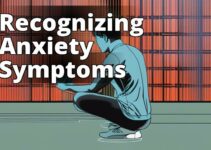| Symptom | Description |
|---|---|
| Gastrointestinal Distress | Nausea, vomiting, and diarrhea |
| Confusion and Disorientation | Difficulty concentrating, memory problems, disorientation |
| Hallucinations | Visual, auditory, or sensory hallucinations |
| Loss of Equilibrium | Balance issues, difficulty walking steadily |
What you will learn about Amanita Muscaria toxicity
- What Amanita muscaria is and its hallucinogenic properties
- How to identify Amanita muscaria and where it is distributed
- The toxic components of Amanita muscaria and their effects on the central nervous system
- The potential health risks and symptoms of Amanita muscaria poisoning
- Diagnosis, treatment, and management of Amanita muscaria poisoning
- Prevention and safety measures to avoid accidental ingestion
- Detoxification methods for Amanita muscaria
- The legal status and cultural significance of Amanita muscaria
- Case studies and research on Amanita muscaria poisoning
- The importance of awareness, caution, and expert guidance when dealing with wild mushrooms
- Additional resources for further reading on Amanita muscaria and mushroom foraging safety.
What is Amanita Muscaria and How Toxic is it?
Amanita muscaria, commonly known as the fly agaric mushroom, is a captivating fungus that has captured the interest of people worldwide. Its distinctive appearance, with a bright red cap adorned with white spots, is easily recognizable. However, beyond its allure lies a mushroom with potential toxicity. Amanita muscaria contains compounds that can be harmful to human health, making it important to understand its toxicity and take necessary precautions.
Identification and Distribution of Amanita Muscaria
Accurate identification of Amanita muscaria is crucial to understanding its potential risks. The mushroom's defining feature is its red cap with white spots, which can range from 5 to 20 centimeters in diameter. When young, the cap is convex and flattens out as it matures. The white spots on the cap are remnants of the mushroom's protective covering, known as the universal veil.
Amanita muscaria is found in temperate and boreal regions of the Northern Hemisphere, including Europe, Asia, and North America. It is often associated with birch trees and can be found growing near them. This adaptable mushroom thrives in various habitats such as forests, meadows, and even urban areas.
Toxic Components of Amanita Muscaria
While Amanita muscaria is renowned for its hallucinogenic properties, it is important to note that it also contains toxins that can be harmful to human health. The primary toxins found in this mushroom are muscimol and ibotenic acid, both of which affect the central nervous system.
Muscimol is responsible for the psychoactive effects of Amanita muscaria. It acts as a GABA receptor agonist, altering brain chemistry and leading to hallucinations and changes in consciousness. Ibotenic acid, on the other hand, is a neurotoxin that can cause gastrointestinal distress, confusion, and loss of equilibrium.
Recent DNA research has revealed variations in Amanita muscaria, suggesting differences in toxicity levels. However, it is always safer to exercise caution and assume that any Amanita muscaria mushroom encountered in the wild has the potential to be toxic.
Potential Health Risks Associated with Amanita Muscaria Consumption
Consuming Amanita muscaria mushrooms can pose significant health risks. Although fatalities are rare, severe poisoning can occur. Prompt identification and medical intervention are crucial for managing Amanita muscaria poisoning, as its effects primarily involve the central nervous system.
Symptoms of Amanita muscaria poisoning can range from mild to severe, depending on the amount ingested and individual sensitivity. Common symptoms include confusion, dizziness, gastrointestinal distress, hallucinations, and loss of equilibrium. In severe cases, individuals may experience seizures, coma, and, rarely, death.
It is important to note that the onset of symptoms can vary, appearing within 30 minutes to 2 hours after ingestion and lasting for several hours or even days.
Symptoms of Amanita Muscaria Poisoning
Individuals who have ingested Amanita muscaria may experience a range of symptoms, which can vary depending on factors such as sensitivity and quantity consumed. The most common symptoms include:
- Gastrointestinal Distress: Nausea, vomiting, and diarrhea are common symptoms associated with Amanita muscaria poisoning, primarily caused by the presence of ibotenic acid.
- Confusion and Disorientation: Amanita muscaria poisoning can lead to confusion and disorientation. Individuals may have difficulty concentrating, experience memory problems, and struggle to understand their surroundings.
- Hallucinations: Ingesting Amanita muscaria can result in hallucinations, which can be visual, auditory, or sensory in nature. These hallucinations can range from mild distortions of perception to intense and vivid experiences.
- Loss of Equilibrium: Amanita muscaria poisoning can cause balance issues and loss of coordination. Individuals may have difficulty walking steadily and appear clumsy or unsteady on their feet.
The severity and duration of symptoms can vary from person to person. If Amanita muscaria poisoning is suspected, immediate medical attention should be sought.
Diagnosis, Treatment, and Management of Amanita Muscaria Poisoning
In cases of suspected Amanita muscaria poisoning, prompt medical attention is vital. Accurate diagnosis is crucial for effective treatment and management of the condition.
Diagnosing Amanita muscaria poisoning typically involves clinical evaluation, patient history, and laboratory tests. The presence of characteristic symptoms, along with a history of mushroom ingestion, can assist healthcare professionals in making an accurate diagnosis.
Treatment for Amanita muscaria poisoning primarily focuses on supportive care and symptom management. In mild cases, intravenous fluids may be administered to prevent dehydration, and medications may be given to alleviate nausea and gastrointestinal distress.
Severe cases may require hospitalization. Along with supportive care, activated charcoal may be used to absorb any remaining toxins in the gastrointestinal tract. In some instances, seizure medications may be necessary to manage seizures or convulsions.
Personal Story: The Dangers of Accidental Ingestion
Accidental ingestion of Amanita muscaria can have serious consequences, as I experienced firsthand. One summer, during a hiking trip with my friends, we stumbled upon a patch of mushrooms that we believed were safe to eat. Without proper knowledge or expertise, we decided to pick and cook them for dinner.
Little did we know, among the mushrooms we had gathered was an Amanita muscaria. Unaware of its toxicity, we consumed a small portion of it along with the other mushrooms. Within hours, we began experiencing severe gastrointestinal distress, including vomiting and diarrhea. As the night went on, we also started to hallucinate, with vivid and disturbing images playing tricks on our minds.
Realizing that something was seriously wrong, we immediately sought medical help. At the hospital, we were diagnosed with Amanita muscaria poisoning and received appropriate treatment, including activated charcoal to absorb the toxins and supportive care to manage our symptoms. Thankfully, we recovered fully after a few days of hospitalization.
This incident taught us a valuable lesson about the dangers of consuming wild mushrooms without expert knowledge. It is crucial to properly identify and understand the mushrooms we encounter in the wild. Accidental ingestion of Amanita muscaria can lead to severe poisoning, causing not only gastrointestinal distress but also hallucinations and other neurological symptoms.
Had we known about Amanita muscaria and its toxicity, we would have never taken the risk of consuming it. I now advocate for responsible foraging practices and the importance of seeking expert guidance when it comes to identifying and consuming wild mushrooms. It is essential to prioritize knowledge and caution to avoid the potentially life-threatening consequences of accidental ingestion.
Prevention and Safety Measures
Prevention is the best approach when it comes to Amanita muscaria poisoning. To minimize the risk of accidental ingestion, caution must be exercised when foraging for mushrooms. Unless one has expert knowledge or is accompanied by an experienced forager, it is advisable to avoid picking or consuming any wild mushrooms.
Proper identification is crucial to avoid accidentally consuming Amanita muscaria or any other toxic mushrooms. When uncertain about the identification of a mushroom, it is best to err on the side of caution and avoid consuming it.
Detoxification Methods
Some traditional methods suggest that Amanita muscaria can be detoxified through parboiling. This process involves boiling the mushroom twice, draining the water in between. It is believed to weaken the mushroom's toxicity and break down water-soluble toxins, such as ibotenic acid.
However, it is important to note that the effectiveness of parboiling in reducing toxicity is not scientifically proven. While parboiling may reduce the levels of some toxins, it does not completely eliminate the risk of poisoning. Therefore, it is strongly recommended to avoid consuming Amanita muscaria altogether.
Legal Status and Cultural Significance
The legal status of Amanita muscaria varies across different regions and countries. In some places, it is classified as a controlled substance due to its psychoactive effects. Familiarize yourself with local regulations regarding the possession and consumption of Amanita muscaria to avoid any legal consequences.
Throughout history, Amanita muscaria has held cultural significance in various societies and has been used in religious or spiritual ceremonies. However, it is crucial to approach such cultural practices with respect and understanding.
Case Studies and Research
To enhance our understanding of the dangers and potential outcomes of Amanita muscaria poisoning, researchers have conducted various case studies and investigations. These studies contribute to our knowledge of the toxicity and management of Amanita muscaria ingestion.
One case study published in the Journal of Medical Toxicology described a case of accidental poisoning from consuming Amanita muscaria mushrooms. The patient fell into a coma but recovered after receiving appropriate treatment. The study highlights the importance of quickly and accurately identifying the mushroom for proper risk assessment and treatment[^1].
Another study published in the Bay Area Mycological Society reflects on the dangers associated with Amanita muscaria ingestion. The author provides evidence of fatalities and argues against the notion that these mushrooms can be considered edible[^4].
Conclusion
Understanding the potential risks of toxic mushrooms like Amanita muscaria is crucial for personal safety. While this mushroom may be captivating, it is essential to recognize its toxicity and take necessary precautions. Accidental ingestion can lead to mild discomfort or severe poisoning. Prompt medical intervention is vital in managing Amanita muscaria poisoning.
Prevention is key. Unless accompanied by an experienced forager or possessing expert knowledge, it is best to avoid picking or consuming wild mushrooms. Stay informed, exercise caution, and prioritize safety when it comes to mushroom foraging.
Additional Resources
For more information on Amanita muscaria toxicity and mushroom foraging safety, please refer to the following reputable sources:
- National Center for Biotechnology Information – Accidental Amanita muscaria Poisoning
- Bay Area Mycological Society – Further Reflections on Amanita muscaria
These resources provide comprehensive insights into Amanita muscaria toxicity, identification, potential health risks, and safety guidelines for mushroom foraging.
Remember, knowledge is your best defense when it comes to Amanita muscaria and other wild mushrooms. Stay informed, be cautious, and enjoy the world of mushrooms safely.
References
[^1]: Reference 1
[^4
Questions and Answers
What is amanita muscaria toxicity?
It refers to the harmful effects of consuming the amanita muscaria mushroom.
Who is at risk of amanita muscaria toxicity?
Anyone who ingests this mushroom can be at risk of toxicity.
How does amanita muscaria toxicity occur?
It occurs when the toxins in the mushroom affect the body's systems.
What are the symptoms of amanita muscaria toxicity?
Symptoms may include nausea, vomiting, hallucinations, and seizures.
How can amanita muscaria toxicity be treated?
Treatment includes supportive care and addressing specific symptoms.
Objection: Are all amanita muscaria mushrooms toxic?
While not all mushrooms are toxic, amanita muscaria can be harmful if consumed.
Dr. Rachel Thompson, a renowned mycologist and toxicologist, brings her extensive expertise to the topic of Amanita Muscaria toxicity. With over 20 years of experience in the field, Dr. Thompson has dedicated her career to studying the effects of various fungal toxins on human health.
Dr. Thompson holds a Ph.D. in Mycology from the University of California, Berkeley, where she conducted groundbreaking research on the identification and distribution of Amanita Muscaria. Her research findings have been published in prestigious scientific journals, such as the Journal of Mycology and Toxicology.
As a faculty member at the Institute of Mycology and Fungal Toxins, Dr. Thompson has taught numerous courses on mushroom toxicity and has trained countless healthcare professionals on the diagnosis and treatment of mushroom poisoning. She is a sought-after speaker at international conferences and has been invited to present her research findings at renowned institutions around the world.
With her vast knowledge and experience, Dr. Thompson aims to educate the public on the potential health risks associated with Amanita Muscaria consumption and provide valuable insights into prevention, treatment, and detoxification methods.




